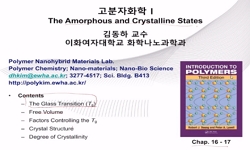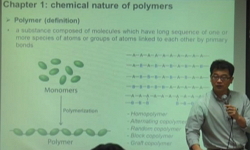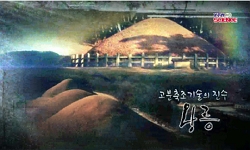The goal of the study is to observe the transitions of tomb style of Koryo Dynasty by analyzing their structure having found around the Chungbuk province that includes Cheongju and Chungju. For analytical purposes, after dividing the tomb remains into...
http://chineseinput.net/에서 pinyin(병음)방식으로 중국어를 변환할 수 있습니다.
변환된 중국어를 복사하여 사용하시면 됩니다.
- 中文 을 입력하시려면 zhongwen을 입력하시고 space를누르시면됩니다.
- 北京 을 입력하시려면 beijing을 입력하시고 space를 누르시면 됩니다.
https://www.riss.kr/link?id=T11807912
- 저자
-
발행사항
서울 : 숭실대학교 일반대학원, 2009
-
학위논문사항
학위논문(석사)-- 숭실대학교 일반대학원 : 사학과(일원) 2009. 8
-
발행연도
2009
-
작성언어
한국어
- 주제어
-
발행국(도시)
서울
-
형태사항
xi, 96 p. ; 26cm
- 소장기관
-
0
상세조회 -
0
다운로드
부가정보
다국어 초록 (Multilingual Abstract)
The goal of the study is to observe the transitions of tomb style of Koryo Dynasty by analyzing their structure having found around the Chungbuk province that includes Cheongju and Chungju. For analytical purposes, after dividing the tomb remains into three according to the region, we will then set the period through seriation method after form classification based on the porcelain, earthenware, and metal artifact, which enable us to figure out chronology. Based on such analysis, we analyze the structural characteristics of stone lined tomb and pit tomb belong to each sub-periods from the 1st and the 3rd. Lastly, the transitional process and characteristic of grave good for the stone lined tombs and pit tombs were analyzed.
The result of analysis reveals that the 1st period start from the 10th century and stone lined tomb prevail. The grave goods include porcelain, like haemuri gup-wan (bowl with a halo shape), plate and flat-bottle. There are a few pit tombs found from this period. The 2nd period starts from the 11th century, during which the number of both stone lined tombs and pit tombs increases and the structural change occurs in niche and yogaeng (the structure formed by inserting artifacts or broken stone under the small hall made on the floor of pit tombs). Various types of porcelain like bowl, plate, and bottle accompanied with many metal artifacts are found in those tombs. Although there are no differences between the quality of the artifacts found from the two forms of tombs, pit tombs contain more grave goods. From the start of the 3rd period, beginning from the 13th century, the number of both types of the tombs rapidly decreases. Stone lined tombs continue to be simplified, to decline and ultimately disappear. On the other hand, pit tomb continues to exist and its tradition remains through Chosun dynasty to the present. The abundance and variety of the grave goods decrease compared to the former period, and more goods are found in pit tombs than in stone lined tombs.
The origin of the stone lined tomb of Koryo Dynasty found in Chungbuk province is found in Yong-am Historic Preservation in Cheongju, where all the constructional modes of stone lined tombs of the dynasty has been confirmed. However, in case of the pit tomb, it is hard to follow the origin since no pit tomb of the previous period has been found, although it is known to be built from the prehistoric era.
So far, through the analysis of the old tombs built in Chungbuk province during Koryo dynasty, we have been followed the transitional process in which the stone lined tomb prevailed in the 1st period was gradually replaced by pit tomb and ultimately disappears. We expect more study results to provide further information about the structure of graves of Koryo Dynasty from Chungbuk province.
국문 초록 (Abstract)
본고의 목적은 청주와 충주를 중심으로 하는 충북지방에서 그동안 보고된 고려 시대 고분의 구조적인 특징을 파악하여 시기별 변천 과정을 살펴보는 것이다. 논문 전개를 위하여 충북지방...
본고의 목적은 청주와 충주를 중심으로 하는 충북지방에서 그동안 보고된 고려 시대 고분의 구조적인 특징을 파악하여 시기별 변천 과정을 살펴보는 것이다. 논문 전개를 위하여 충북지방의 고려시대 고분 출토 유적을 전체 3지역으로 나누었다. 그리고 확인된 유적의 부장품 중 편년 파악 가능한 도자기와 토기 및 금속유물을 중심으로 형식 분류하여 순서배열법을 통하여 분기 설정을 하였다. 이를 기본으로 1기부터 3기까지 각 분기별 석곽묘와 토광묘가 갖는 구조적 특징을 찾아보고, 마지막으로 석곽묘와 토광묘의 변천과정과 부장품의 특징을 파악하는 순서로 작성되었다.
그 결과 충북의 고려고분은 전 시기인 통일신라시대 고분과 비교하여 동일한 축조수법과 유사한 부장 양상을 찾아보니, 충북의 고려고분의 기원은 충북의 통일신라고분으로부터 발견할 수 있었다. 이는 특히 석곽묘에 한한 것으로 10세기 전반부터 11세기 전반까지 통일신라시대 전통을 이어받은 석곽묘 위주로 조성되며 해무리굽청자완을 중심으로 접시+편병+가랑비녀 등 간단한 공반 유물양상을 성립하는 시기이다. 11세기 후반 경부터 고분이 수적으로 급증하는 시기로 특히, 토광묘의 조성이 매우 활발해진다. 부장품은 해무리굽완 대신 발을 기본으로 반상기 조합양상을 전 시기에 이어 유지하고, 숟가락+가위+동경+동전+가랑비녀 등 다종다량의 금속 유물이 추가되어 전반적으로 후장(厚葬) 성격이 강하다.
이후 13세기 후반 경부터는 고분 조성이 줄어들면서 석곽묘보다 토광묘의 비중이 높아진다. 부장 유물은 자기(도기) 또는 청동제의 발+접시+병 조합양상은 기본적으로 유지되나, 금속류의 매납이 현격히 줄어든다. 이 후 조선시대로 넘어가며 석곽묘는 충주 단월동II-6호 석곽묘를 마지막으로 그 존재가 충북에서 사라지게 되며, 토광묘는 조선시대 회곽묘와 함께 가장 일반적이고 보편적인 묘제로 전개되는 과정을 거친다.
이상으로 충북에서 고려시대 고분 연구를 통하여 1기에 석곽묘를 중심으로 축조되었다가 점차 토광묘로 대체되며, 석곽묘가 쇠퇴해가는 변천과정을 살펴보았다.
추후 충북지역의 고려고분에 대하여 보다 당시 사람들의 행위와 귀결되는 연구가 진행되기를 바라며, 타지방과의 비교를 통한 충북의 독특한 고려시대 장법에 대한 특징에 대하여 보다 심도 있게 연구되기를 기대해본다.
목차 (Table of Contents)
- 國文抄錄 vii
- 英文抄錄 ix
- 제1장. 머리말 1
- 제2장. 조사유적 현황 6
- 2.1. 1지역 - 보은․옥천․영동 8
- 國文抄錄 vii
- 英文抄錄 ix
- 제1장. 머리말 1
- 제2장. 조사유적 현황 6
- 2.1. 1지역 - 보은․옥천․영동 8
- 2.2. 2지역 - 청주․청원․진천․음성․괴산 8
- 2.3. 3지역 - 충주․단양․제천 10
- 제3장. 부장품으로 본 시기구분 13
- 3.1. 형식분류 17
- 3.1.1. 자기류 17
- 3.1.2. 도기류 22
- 3.1.3. 금속류 24
- 3.2. 분기 28
- 3.2.1. 순서배열 28
- 3.2.2. 분기별 고분과 출토유물 33
- 3.3. 연대 36
- 3.3.1. 1기 36
- 3.3.2. 2기 39
- 3.3.3. 3기 44
- 제4장. 분기별 고분구조의 변천 48
- 4.1. 고분구조 속성 48
- 4.1.1. 석곽묘 48
- 4.1.2. 토광묘 54
- 4.2. 분기별 고분 변천 56
- 4.2.1. 1기 56
- 4.2.2. 2기 59
- 4.2.3. 3기 69
- 제5장. 충북지방 고려 고분의 전개 77
- 제6장. 맺음말 86
- 參考文獻 89












